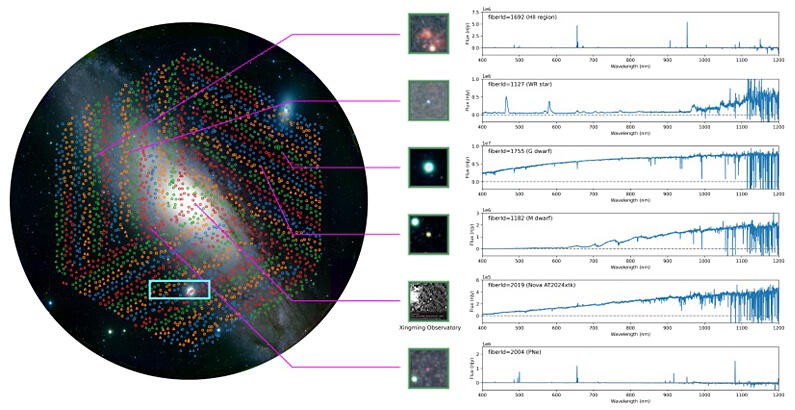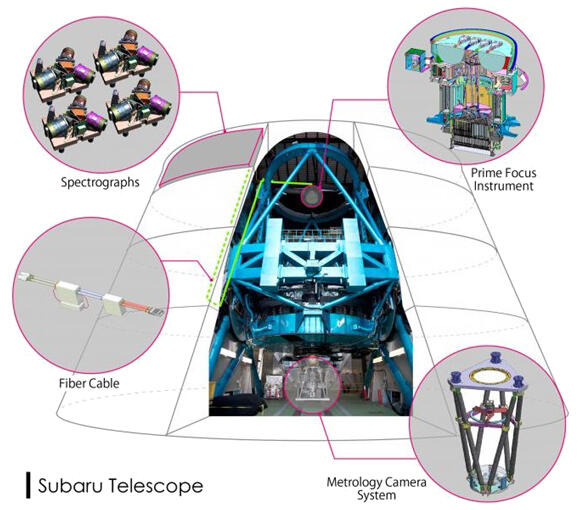A research group led by Professor Hitoshi Murayama of the Kavli Institute for the Physics and Mathematics of the Universe of the University of Tokyo (also professor at the University of California, Berkeley) and Professor Naoyuki Tamura of the National Astronomical Observatory of Japan's Subaru Telescope in Hawaii announced on January 10 that Subaru Telescope's Prime Focus Spectrograph (PFS) will be fully operational at Hitotsubashi University's Hitotsubashi Auditorium (National Center of Sciences: Hitotsubashi, Chiyoda City, Tokyo Prefecture). By leveraging Subaru Telescope's wide field of view, spectral information about approximately 2,400 objects can be obtained at once. Observations are scheduled to begin in March.

Credit: PFS Project/Kavli IPMU/NAOJ
PFS has been developed and installed by an international joint research group led by Murayama in time before the semester starting February 1 (semester S25A). Tamura served as the project manager. Approximately 2,400 optical fibers are placed throughout the primary focal field of view, which is approximately 1.3° in diameter, and is said to function like a compound eye. The end of each fiber moves with a high precision of 20-30 µm in alignment with the object to be observed, and the light from the object is captured by the spectrograph. This allows simultaneous acquisition of the entire visible light spectrum and a portion of the infrared spectrum (wavelength range: 380-1260 nm).
It took more than 20 research institutes in Japan, the US, France, Brazil, Taiwan, Germany, and China 15 years to develop this technology. Most of the $110 million in total development funds were provided by competitive grants obtained by the participating research institutes and donations.
Observations using the PFS are expected to advance studies of how neutrino mass and dark energy change with time, curvature of the universe, assembly history of the Milky Way and Andromeda galaxies, nature of dark matter, formation history of galaxies, and other topics. The most recent observation is scheduled for the night of March 22, when a dwarf galaxy will be observed.

Credit: PFS Project/Kavli IPMU/NAOJ
Over the next five to six years, Murayama, Tamura, and their international team at the PFS will conduct spectroscopic observations over 360 nights to create a three-dimensional map of the universe. The project is expected to be the largest project in the history of the Subaru Telescope.
Murayama said, "I hope to approach the big questions that concern the entire universe, such as its birth, evolution, and fate."
This article has been translated by JST with permission from The Science News Ltd. (https://sci-news.co.jp/). Unauthorized reproduction of the article and photographs is prohibited.




